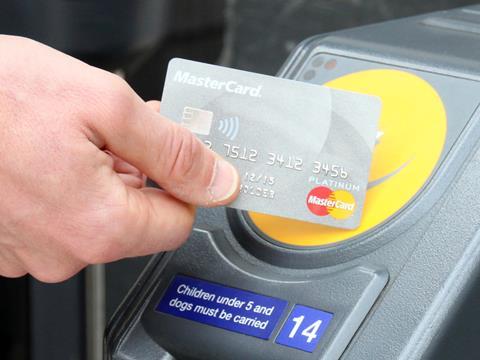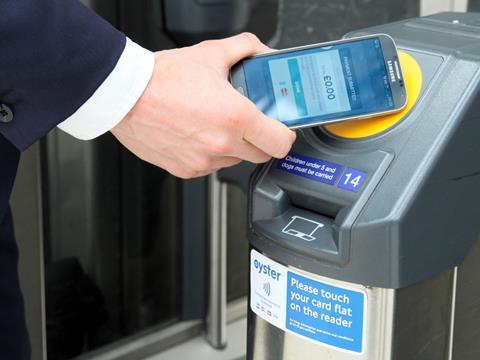The coming years will be defined by a migration of automated fare collection systems to some form of account-based ticketing, says Jean-Philippe Wolyniec, Chair of the Marketing Working Group at the OSPT Alliance industry association. But while the level of convenience offered by bank card acceptance is high, operators must consider all the factors before taking the jump.

TICKETING: An interesting observation has occurred to me during industry conferences that I’ve attended and recent articles I’ve read: account-based ticketing is rarely distinguished from EMV bank card payment.
While EMV transport ticketing is a form of ABT, this assimilation is problematic. And crucially, it’s hindering operators and authorities from being able to make the best decisions for their local markets.
Under pressure to deliver more digitalised, on-demand and value-added services, transport operators are facing an influx of information and choices to make. And, as an enabler of mobile and contactless services, ABT is compelling.
The increasing reference to ABT when a pure EMV system is being discussed, however, is impairing the ability of decision makers to differentiate between the nuances and benefits of ABT models with and without EMV.

A universal truth is that each transport market is highly unique. While EMV may be the best solution for some, the reality is that a standardised deployment of this model is not best suited to everyone.
To help bring some clarity, let’s do a few fact checks.
US-based industry body the Secure Technology Alliance defines ABT as ‘the transit fare collection system architecture that uses the back-office system to apply relevant business rules, determine the fare, and settle the transaction.’ Essentially, the smart thinking moves from the front-end fare media, such as a card, to the back-end managed by the operator.
The benefits are numerous: simpler system management, reduced operational costs (including the dematerialisation of tickets), quicker throughput, more competitive business models and simplified connections with adjacent services. Consumers can top-up remotely and use a range of fare media, whether that be a card, mobile or wearable. In the age of mobility-as-a-service, migrating to ABT makes perfect sense to most operators.
So, why the confusion with EMV? People would likely point to the most frequently cited ABT success story, Transport for London, which uses EMV. But there are distinct differences in implementation and important considerations needed before deciding to launch EMV.
Account-based systems can take many forms: with or without EMV, with or without a closed-loop card, online or offline. Indeed, a hybrid form of an ABT system with an EMV plug-in is even possible. So, to help make sense of it all, here’s the key considerations needed.
All’s fare in EMV and ABT — or is it?
Capping rules and limits can be applied with EMV acceptance, but are highly complex to implement and maintain in the field.

While this works well for infrequent travellers such as tourists, it’s far less cost-effective for regular commuters, concessions or children who would usually benefit from a discounted fare. This also raises another challenge: those without bank accounts, such as children, who would be without access to a bank card.
Andy Yip of Hong Kong’s Octopus has said ‘operators need to keep in mind that not all passengers will have an EMV card. To be inclusive and adhere to the principle of public transport — to provide transportation to (all) public, a more inclusive and convenient option should always be available to everyone.’
Love your legacy
Projects rarely plan to entirely replace the existing smartcard system, and with a report from Snapper finding most only estimate 20% adoption of EMV, it is important to consider the return on investment.

EMV payment began rolling out across TfL in 2012, yet contactless payments remain less than half of all London Underground journeys, and an even smaller fraction of bus journeys.
In 2018, the launch of a TfL app enabling passengers to top-up their Oyster card ‘on the go’ from their smartphone and to view their journey history made the legacy ticket medium even more appealing and user-friendly.
In addition to how big your current customer base is, this also poses the question of how important your brand is. To migrate entirely to EMV would forfeit brand ownership and management — not to mention all transactions would be subject to a cut from banks.
Risk management
All systems require a level of risk management in order to maintain throughput levels — a purely online ABT system would require internet connectivity speeds and reliability which are currently unavailable.
For EMV, this requires its own unique ‘payment and processing later’ model to accommodate where funds may not be available. It’s possible to set up a settlement process with issuers, however this creates additional partnerships that, in turn, require time and money to manage.
Did somebody say data?

A major benefit of an ABT system is the increased access to valuable traveller data which can be analysed and used to inform new and competitive business and pricing models.
With an EMV implementation, it’s worth noting that the involvement of card providers will reduce the amount of data available to process and evaluate.
Defining your migration to ABT
Undoubtedly, the coming years will be defined by a migration of automated fare collection systems to ABT in some form. The level of convenience offered by EMV acceptance is high, but it is vital that before taking the jump, operators listen beyond the EMV buzz and consider all the factors.

Even simply considering a hybrid ABT system with EMV included can be a game-changer for operators to maximise the success of existing legacy systems, minimise costs, and easily enable acceptance of new fare media and the addition of new features.
Singapore is just one example of moving from EMV to a hybrid system. EZ-Link, which covers both the Mass Rapid Transit and Light Rail Transit services, is a brilliant example of a value-adding ABT system. Managed via a mobile app, travellers can track transactions, block and top-up their account on the move. The app also brings additional benefits such as a reward scheme, support for complementary services such as car parking, and auto-reload functions. Travellers are also given the choice of using either an EZ-Link card or mobile device as fare media.
Another factor commonly overlooked by operators is the benefits of utilising open standards. By championing open-ness, operators can be freed from the constraints and costs of vendor lock-in, while empowered to innovate and upgrade systems more easily and at a pace they define.
OSPT Alliance’s proven standard, CIPURSE, is pre-packed with a high level of functionality and offers a strong foundation for any ABT project.
Earlier this year, we announced our collaboration with Calypso Networks Association to further simplify and fast-track global adoption of transit ticketing open standards. By combining efforts and expertise, selecting open standards has never been a more compelling or futureproof option.



